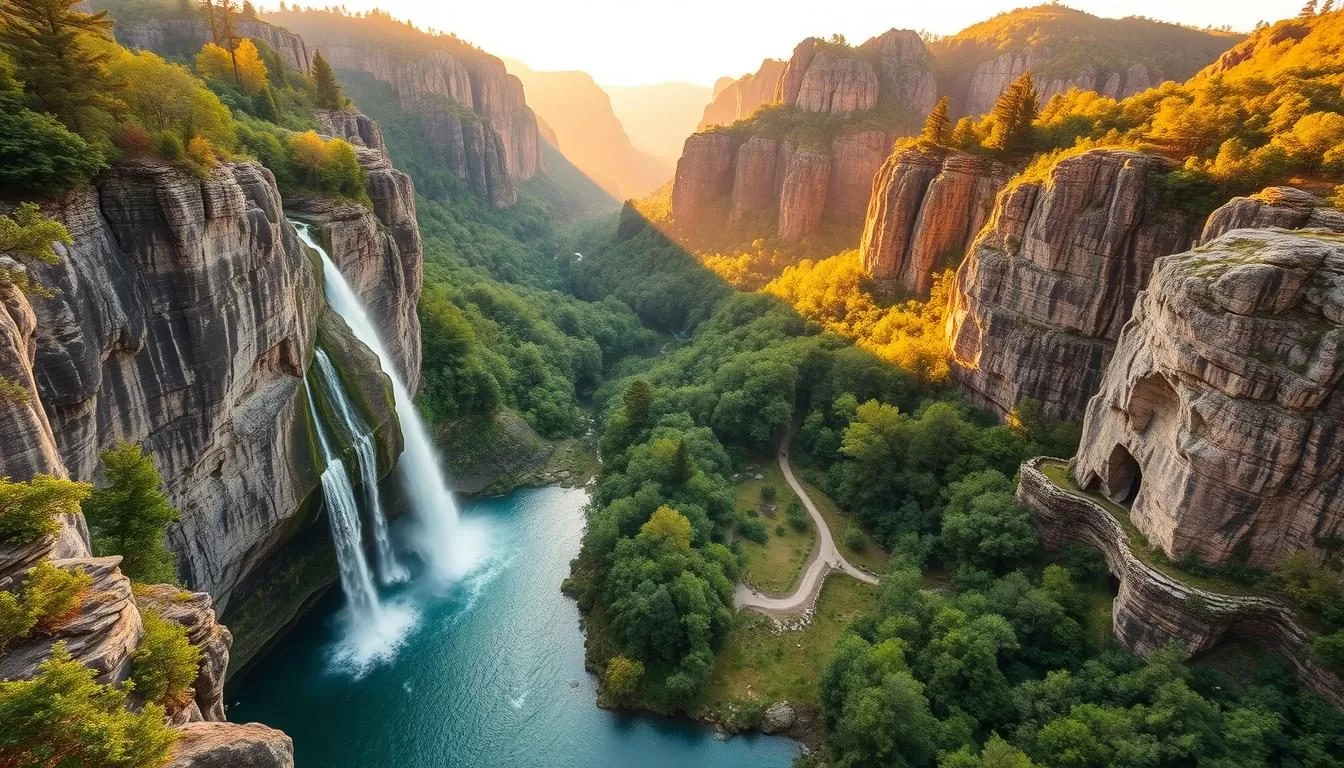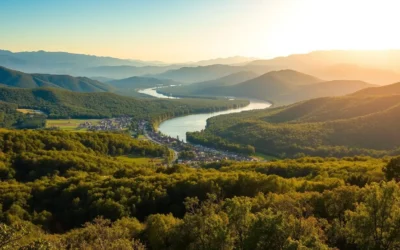✓ Accommodations ✓ Flights ✓ Rental Cars
Welcome to one of Alabama’s most spectacular natural treasures. The canyon, carved by the Little River as it flows atop Lookout Mountain, is considered one of the deepest canyon systems east of the Mississippi.
This 15,288-acre preserve offers a wide variety of activities for visitors. You can join a ranger for an informative hike, take a ride in the Wildlife Management Area, or enjoy a picnic with the family at Canyon Mouth Park.
Whether you’re an adventure seeker or a nature lover, this comprehensive guide will walk you through the top activities and attractions. You’ll discover seasonal highlights and get practical tips for your visit to this remarkable destination.
Discovering the Natural Beauty of Little River Canyon
As you step into the Little River Canyon National Preserve, you’ll be greeted by the majestic beauty of one of the deepest river canyons in the United States. The preserve is renowned for its diverse ecosystems and rich wildlife, making it a paradise for nature enthusiasts.
The Formation and Geography of the Canyon
The Little River Canyon is notable not only for its depth but also for its unique geological formation. The canyon’s landscape has been shaped by millions of years of erosion, resulting in a dramatic landscape that is both visually stunning and geologically significant.
Wildlife and Ecosystems in the Preserve
The diverse ecosystems within the preserve support a wide range of wildlife and animals. The area is particularly known for its birdwatching opportunities, with over 142 species of birds documented.
| Wildlife Category | Species | Notable Features |
|---|---|---|
| Birds | Over 142 species | Vultures, raptors, and various songbirds |
| Mammals | White-tailed deer, foxes, black bears | Varied habitats support diverse mammal life |
| Aquatic Life | Blue shiner minnow | Endangered species requiring pristine water conditions |
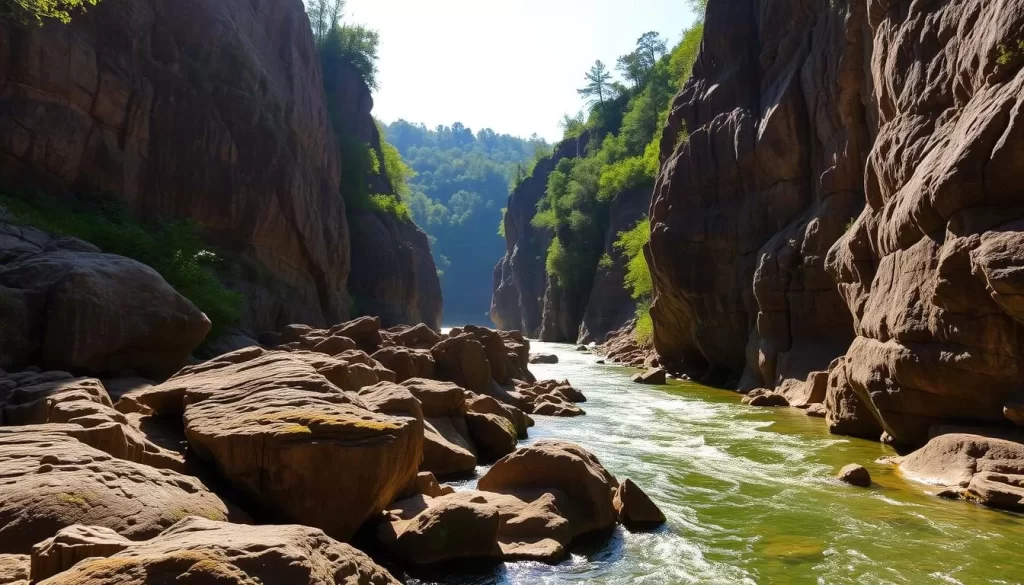
Chasing Waterfalls: Must-See Cascades in the Preserve
Chasing waterfalls is an exciting adventure in Little River Canyon National Preserve. The preserve boasts several stunning cascades that attract visitors from all over.
Little River Falls: The Iconic 45-Foot Cascade
Little River Falls is a breathtaking sight, cascading 45 feet into the river below. The falls are a highlight of any visit to the preserve.
Grace’s High Falls: Alabama’s Tallest Waterfall
Grace’s High Falls stands out as Alabama’s tallest waterfall, offering a majestic view. It’s a must-see for anyone visiting the area.
Martha’s Falls: A Popular Swimming Hole
Martha’s Falls, also known as “Hippie Hole,” is a favorite among visitors for swimming and picnicking. The area features gentle cascades and clear pools.
Hiking Adventures Through Scenic Trails
The scenic trails within Little River Canyon National Preserve provide a unique opportunity to experience the natural beauty of Alabama. With a range of trails for different skill levels, you can choose your adventure based on interest and ability.
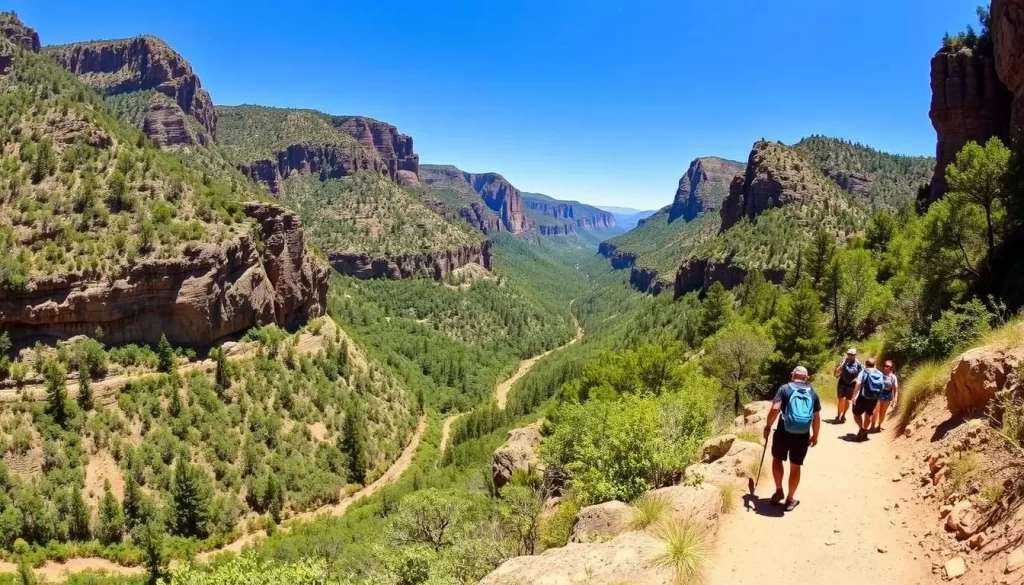
Canyon Rim Trail: Spectacular Overlook Views
The Canyon Rim Trail offers spectacular views from the rim of the canyon. This trail is designed for those who want to experience the grandeur of the canyon without a strenuous hike.
Beaver Pond Loop Trail: A Moderate 2-Mile Hike
The Beaver Pond Loop Trail is a moderate 2-mile hike that takes you through a variety of landscapes, including the Beaver Pond. This trail is suitable for those looking for a more immersive experience.
Little River Falls Trail: An Easy 1.5-Mile Walk
The Little River Falls Trail is an easy 1.5-mile walk that connects the Little River Falls overlook with a boardwalk, providing scenic views of the river. This trail is perfect for families and those seeking a leisurely experience.
The trail features several interpretive signs explaining the geology, hydrology, and cultural history of the falls area, making it both recreational and educational.
Scenic Drives Along Little River Canyon Rim Parkway
Embark on a breathtaking journey along the Little River Canyon Rim Parkway, where the scenery changes with every turn. This 11-mile drive is a must-do experience when visiting the Little River Canyon National Preserve.
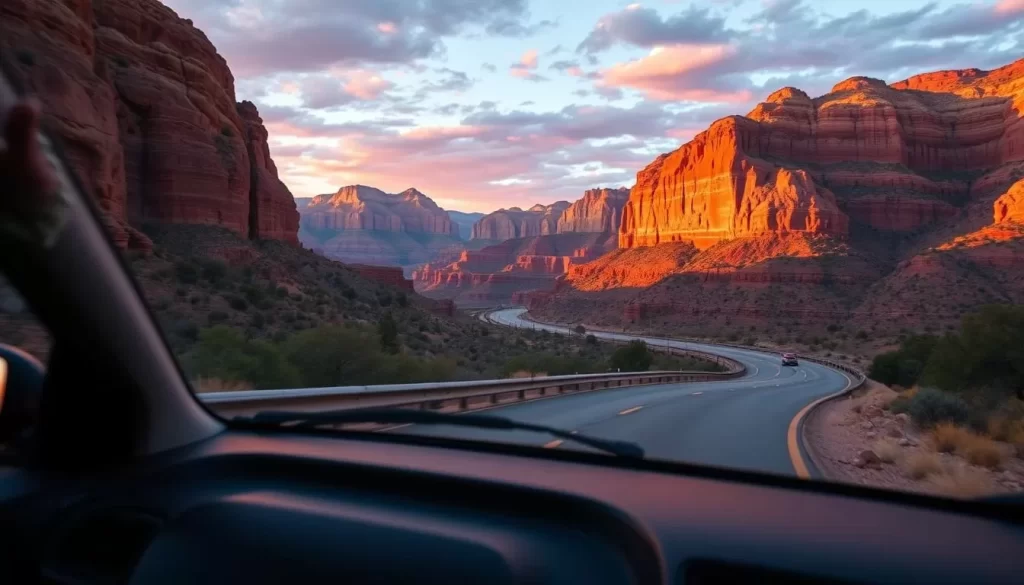
Best Overlooks Along the 11-Mile Drive
The drive features multiple overlooks, each offering a unique perspective on the canyon. You’ll enjoy panoramic views of the river below and the surrounding landscape. Be sure to stop at the designated overlooks to take in the breathtaking scenery.
Seasonal Highlights and Photography Tips
Each season transforms the drive into a new experience. In the spring, wildflowers bloom along the roadside, while summer brings lush greenery. Autumn foliage is a photographer’s dream, with vibrant colors throughout the canyon. Winter reveals the dramatic rock formations. Early morning and late afternoon drives offer the best photography opportunities, with soft light enhancing the natural beauty of the canyon.
Rock Climbing Adventures on Sandstone Cliffs
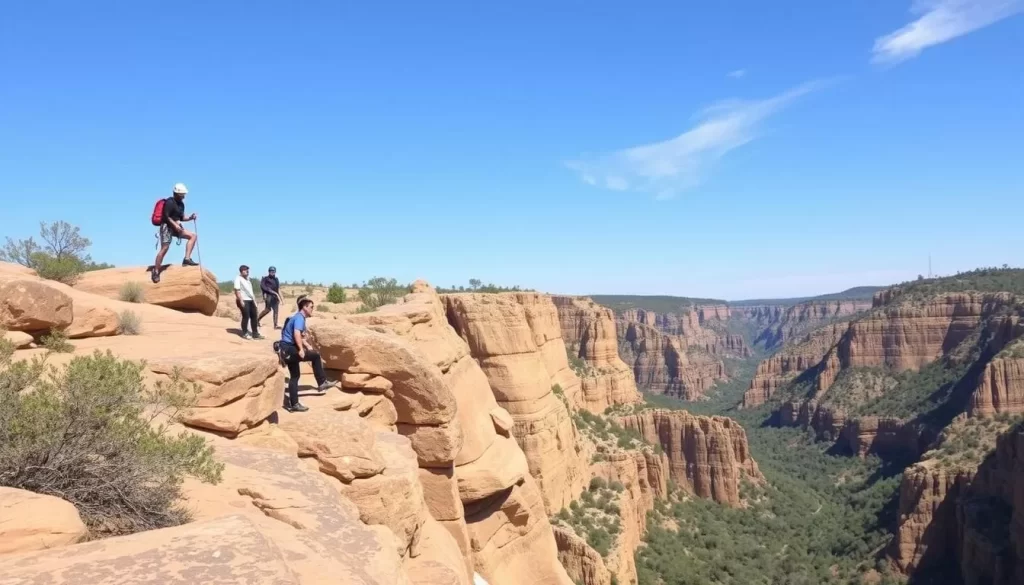
Experience the thrill of rock climbing at Little River Canyon, where the rugged sandstone cliffs challenge climbers of all skill levels.
The preserve offers a variety of climbing routes for different skill levels. You can choose from a range of climbs, ensuring that your adventure is both challenging and safe.
Popular Climbing Routes for Different Skill Levels
Little River Canyon offers a range of climbing routes suitable for different skill levels. Whether you’re a beginner or an experienced climber, you’ll find a route that suits your abilities.
Safety Tips and Equipment Requirements
When rock climbing at Little River Canyon, safety is paramount. You must bring your own equipment, including helmets, dynamic ropes, and proper footwear. Be aware of the weather conditions, as the sandstone can become slippery when wet.
Always climb with a partner and inform someone of your climbing plans and expected return time.
Fishing Opportunities in Little River
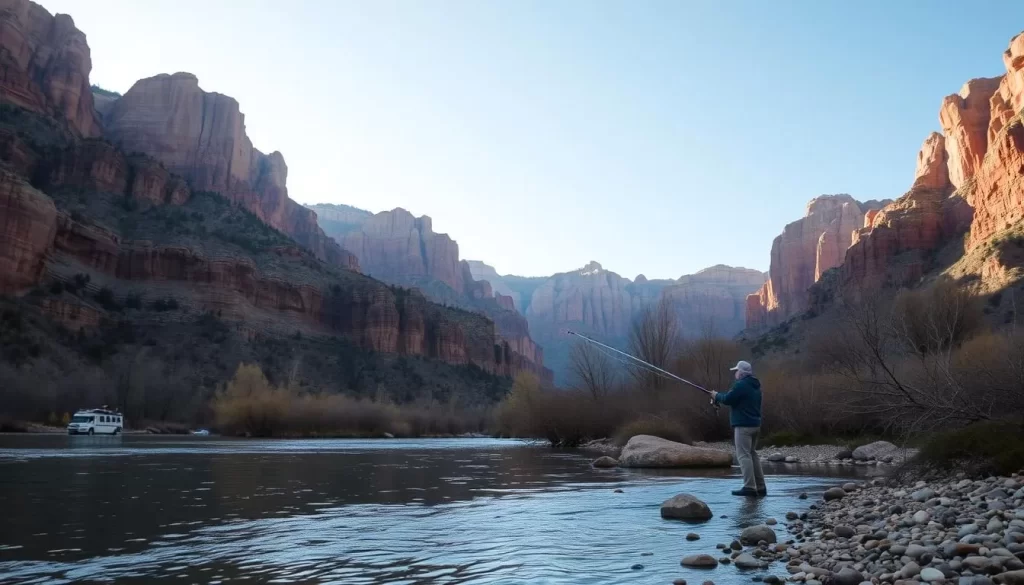
Fishing in Little River Canyon National Preserve is an experience that combines the thrill of reeling in a catch with the serenity of being surrounded by nature. The Little River offers a unique fishing experience amidst breathtaking scenery.
Best Fishing Spots and Common Species
The Little River is home to a variety of fish species. You can fish anywhere along the river inside the national preserve. The river’s diverse ecosystem supports a range of fish, making it a great spot for anglers.
Fishing Regulations and License Requirements
To fish in the Little River, you must have a valid Alabama or Non-Resident Fishing License, unless you are under 16 or over 65. The preserve has specific regulations to protect the river’s ecosystem, including prohibitions on seine fishing, the use of nets, and fishing with live or dead bait fish, amphibians, non-preserved fish eggs, or fish roe. Additionally, motorized boats, including those with trolling motors, are not permitted.
Kayaking and Canoeing the Little River

Experience the thrill of navigating the Little River, a challenging yet rewarding adventure. The Little River Canyon National Preserve is a paradise for kayakers and canoeists, with its clear waters and scenic landscapes.
Winter and Spring Paddling Opportunities
During winter and spring, the Little River offers ideal paddling conditions. The water level is typically higher, making it suitable for navigating the river’s rapids. The upper section of the river, located in the Wildlife Management Area, features Class II-III rapids, suitable for intermediate paddlers.
Skill Levels and Safety Considerations
The section of the Little River below Little River Falls is for expert paddlers only, featuring Class IV-VI rapids. Even Olympic-level kayakers have trained on this section. To ensure safety, paddlers should wear proper gear, including helmets and personal flotation devices. It’s also crucial to paddle with a group, as the remote nature of the canyon can make it difficult to receive help in case of an emergency.
Bicycling Through Little River Canyon National Preserve

Little River Canyon National Preserve offers a unique bicycling experience for outdoor enthusiasts. The preserve provides various biking opportunities, from road cycling along the scenic drive to mountain biking in the Wildlife Management Area.
Road Cycling Along the Scenic Drive
The scenic drive through Little River Canyon National Preserve is a must-ride for any cyclist. The 11-mile drive offers stunning views of the canyon and surrounding landscape. As you ride along the river canyon, you’ll be treated to a visually stunning experience.
Mountain Biking in the Wildlife Management Area
For those looking for a more rugged experience, the Wildlife Management Area offers 23 miles of dirt and gravel roads. These multi-use roads are shared with hikers, horseback riders, and motor vehicles, so be sure to be aware of your surroundings. The terrain varies from flat sections to moderately challenging hills, making it suitable for riders with some experience.
Horseback Riding in the Backcountry

Explore the backcountry of Little River Canyon on horseback, a truly immersive experience. The Little River Canyon National Preserve offers a unique opportunity to connect with nature.
Horseback riding allows you to traverse the vast wilderness areas of the preserve, enjoying the natural beauty and potentially spotting local wildlife.
Trail Options and Regulations
The preserve has designated backcountry roads suitable for horseback riding, such as Road01 and Road05. Riders must adhere to the regulations set by the preserve, including respecting closed areas and following guidelines to protect the wildlife management area.
Parking and Access Points
There are two primary parking areas for horseback riders: the Hunters Check Station and the County Road295 Parking Lot. The Hunters Check Station, accessible from Cherokee County Road103 off Highway35, provides direct access to Road01. The County Road295 Parking Lot offers an alternative access point from the north side of the preserve.
Both parking areas have sufficient space for horse trailers and allow for easy access to the backcountry road system. However, riders should be prepared with all necessary supplies as there are no amenities at these locations.
Wildlife Viewing and Bird Watching
As you explore the vast expanse of Little River Canyon National Preserve, you’ll discover a haven for wildlife viewing and bird watching. The preserve’s diverse landscapes and rich biodiversity make it an ideal location for observing a wide range of wildlife and animals.
Bird Species and Best Viewing Locations
The Little River Canyon area is renowned for its bird species. You can spot various birds in the preserve, particularly in areas with dense vegetation and near water sources. Some of the best viewing locations include the Canyon Rim Trail and the Beaver Pond Loop Trail. Using binoculars can enhance your bird-watching experience.
- Various bird species can be observed throughout the preserve.
- The Canyon Rim Trail and Beaver Pond Loop Trail are recommended for bird watching.
Seasonal Wildlife Spotting Opportunities
River Canyon transforms with the seasons, offering different wildlife viewing opportunities. In the spring, the area comes alive with white-tailed deer and wild turkeys. Summer evenings are perfect for observing the diverse bat population. In the fall, the canyon national preserve sees increased activity from black bears. Winter provides clear visibility into the forest, making it easier to spot foxes, bobcats, and other wildlife.
- Spring: White-tailed deer, wild turkeys, and amphibians.
- Summer: Bat population at dusk.
- Fall: Black bears foraging for nuts.
- Winter: Foxes, bobcats, and diverse rodent population.
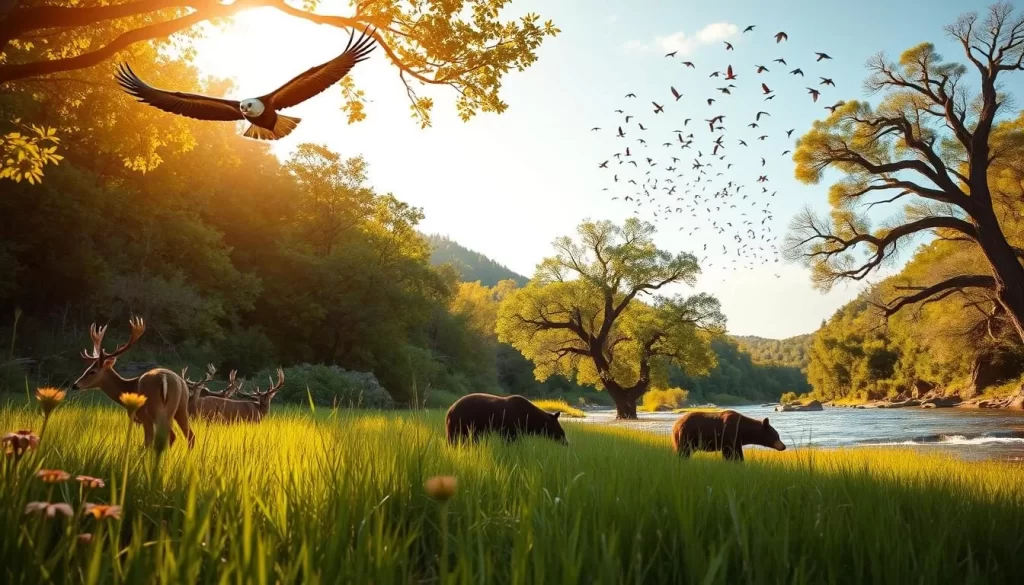
Photography Hotspots in Little River Canyon National Preserve, Alabama: Best Things to Do – Top Picks
Photographers will love Little River Canyon National Preserve for its diverse scenery and the many opportunities it provides to capture memorable images. The preserve offers a range of photography hotspots, from the majestic Little River Canyon to the scenic waterfalls and canyon views.
Capturing Waterfalls and Canyon Views
The canyon national preserve is home to numerous waterfalls, including the iconic Little River Falls. To capture the best images, focus on the play of light and water, using techniques like long exposures to create silky water effects. The river canyon views offer a range of photography opportunities, from dramatic overviews to intimate details.
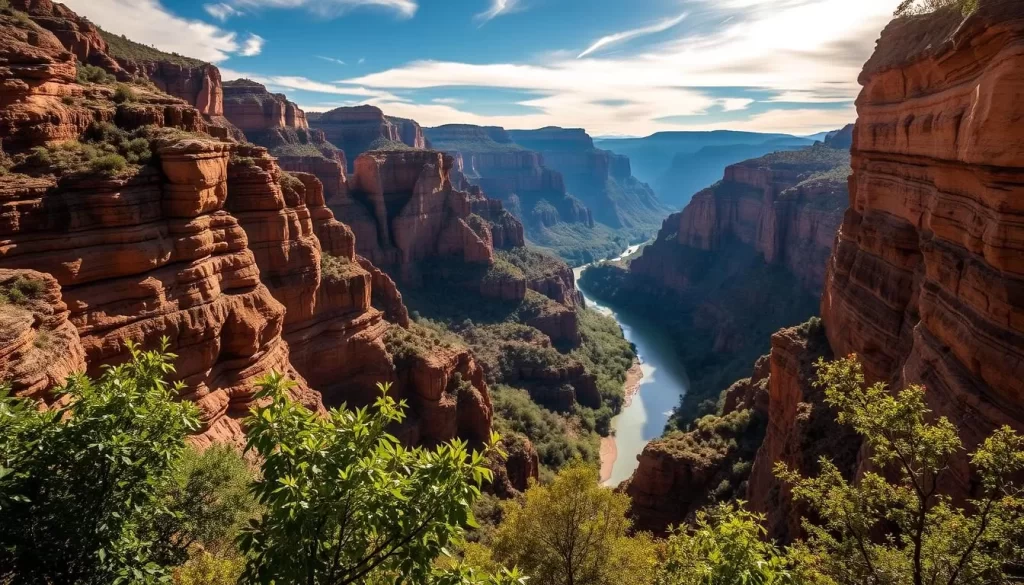
Seasonal Photography Opportunities
Each season transforms the preserve into a unique photography landscape. In the spring, wildflowers bloom, while summer brings lush greenery. Autumn foliage turns the canyon into a kaleidoscope of colors, and winter reveals the dramatic geology. You can visit the preserve multiple times to capture the different seasonal landscapes.
Nearby Attractions: Expanding Your Visit
To enhance your trip, consider exploring the nearby attractions that complement the natural beauty of Little River Canyon.
Fort Payne Depot Museum
The Fort Payne Depot Museum is a great place to learn about the region’s history. It is located in a historic train depot.

Alabama Fan Club and Museum
Visit the Alabama Fan Club and Museum in Fort Payne to discover the largest collection of country music memorabilia in the world.
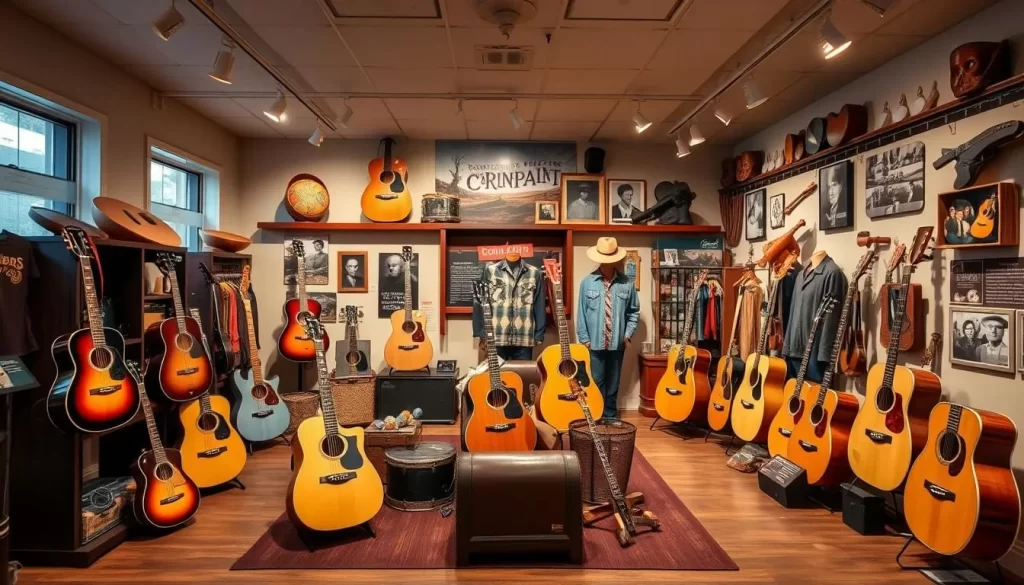
DeSoto State Park
Located just 6 miles northeast of Fort Payne, DeSoto State Park is a paradise for outdoor enthusiasts. The park features 25 miles of trails for hiking and biking, a large swimming pool, and the Little River flowing through it.
The park offers various trails, including the Goat Rock Trail with 140 stone steps and the 1.5-mile Hike with a Naturalist. For families, the 1-mile Sensory Hike is a great option.
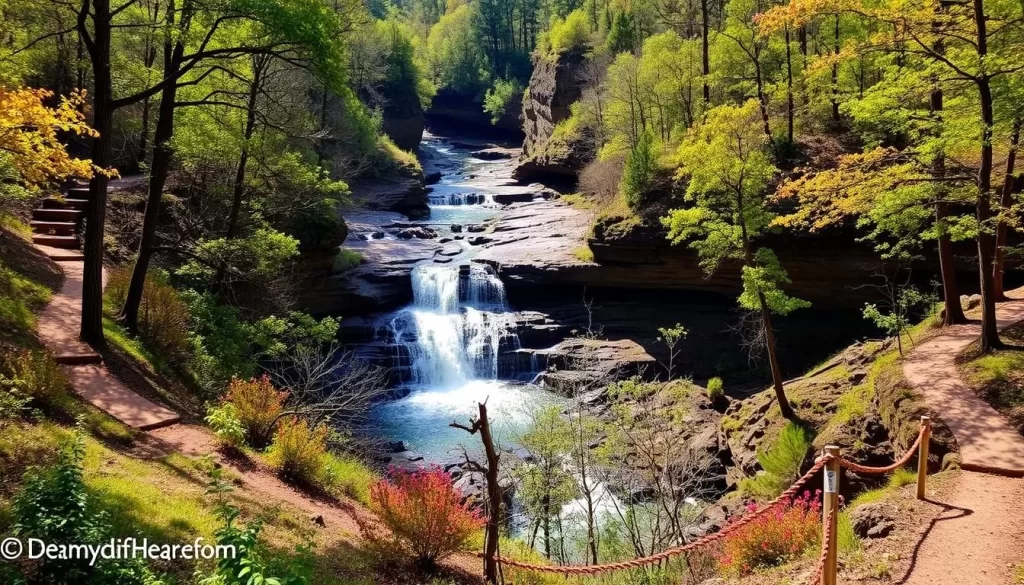
Seasonal Activities and Events
As the seasons change, the Little River Canyon National Preserve transforms, providing a unique experience for visitors. The preserve’s diverse landscape and climate make it an attractive destination for outdoor enthusiasts in every season.
Spring and Summer Activities
During spring and summer, the Little River Canyon is a haven for outdoor enthusiasts. You can enjoy hiking, rock climbing, and kayaking in the warm weather. The preserve’s trails are perfect for family hikes, and the river offers exciting opportunities for kayakers and canoeists.
The canyon national preserve also hosts various events during this period, including guided nature walks and educational programs.
Fall and Winter Experiences
In the fall, the river canyon is transformed into a kaleidoscope of color as the hardwood forests display brilliant reds, oranges, and yellows. The annual Canyon Fest, usually held in early November, celebrates the preserve with live music, local arts and crafts vendors, and family-friendly activities.
Winter reveals the canyon’s dramatic geology, with leafless trees providing unobstructed views of rock formations. The relatively mild winter temperatures make it an excellent off-season hiking location, with fewer visitors on trails and increased chances of spotting wildlife. You can also enjoy whitewater kayaking during this time, as increased rainfall creates optimal water levels for navigating the challenging rapids.
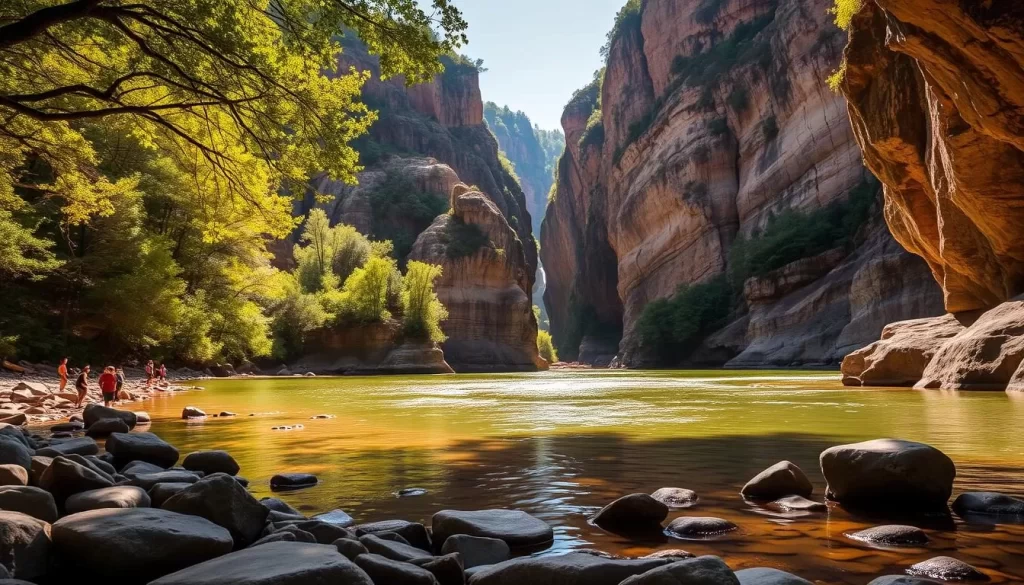
Conclusion
With its vast landscape and varied recreational opportunities, Little River Canyon National Preserve is a must-visit destination. The preserve offers visitors a wide variety of activities, from joining a ranger for an informative hike to taking a ride in the Wildlife Management Area, enjoying a picnic at Canyon Mouth Park, or relaxing at one of the overlooks.
Little River Canyon National Preserve stands as one of Alabama’s most spectacular natural treasures, with its 15,288 acres of protected canyon landscape providing an incredible diversity of recreational opportunities. The preserve caters to all, whether you’re seeking adrenaline-pumping adventures like rock climbing and whitewater kayaking or peaceful experiences like bird watching and photography.
As you plan your visit, remember that the National Park Service rangers and staff at the Little River Canyon Center are excellent resources for current conditions, safety information, and insider tips. This remarkable place, known as “the Grand Canyon of the East,” offers something new across its four distinct seasons, making it a destination worth visiting multiple times throughout the year.
The above is subject to change.
Check back often to TRAVEL.COM for the latest travel tips and deals.
